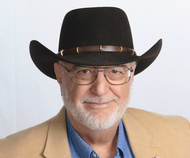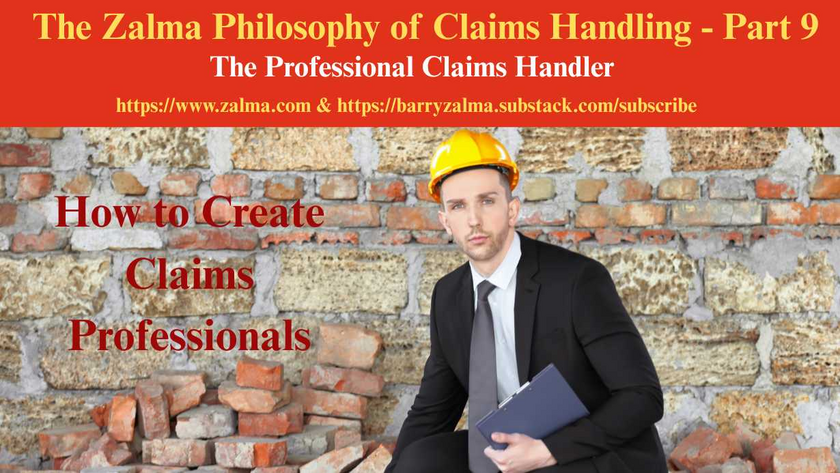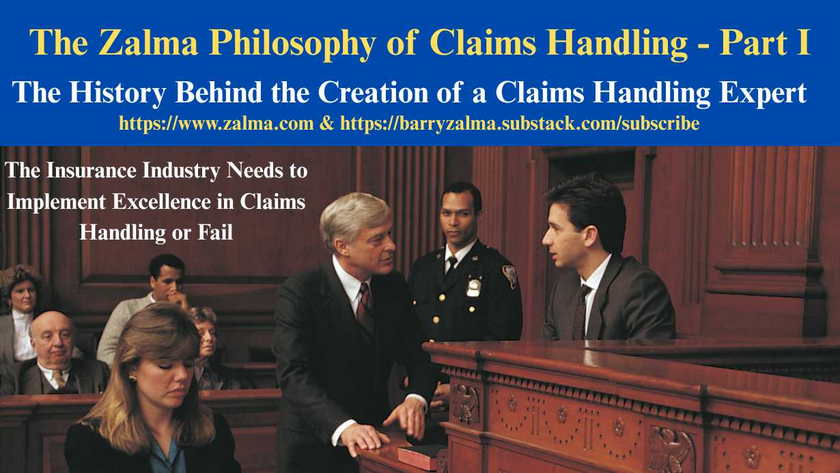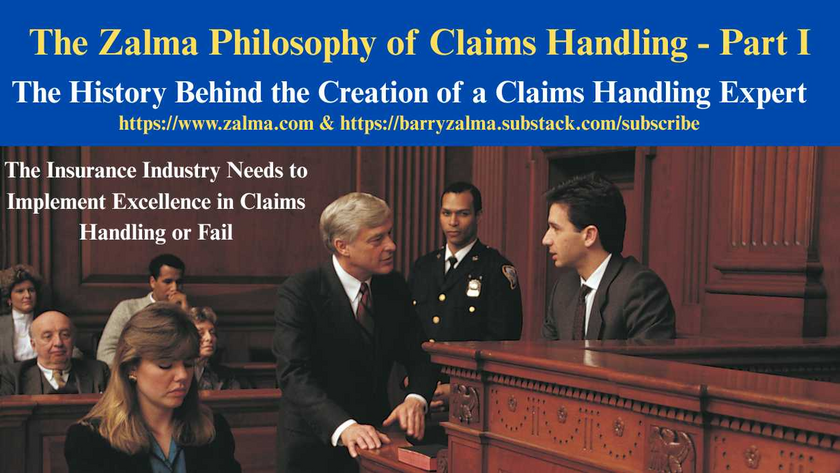
Investigation of Suspected Fraud
Barry Zalma
Read the full article at https://lnkd.in/gMzMsA5N and see the full video at https://lnkd.in/gnjjy-Um and at https://lnkd.in/gpiWjVRG and at https://zalma.com/blog plus more than 4450 posts.
Every first-party property adjuster will face in his or her career attempts to defraud the insurer for whom the adjuster works. It is necessary that the adjuster is aware of each type of property insurance fraud he or she may encounter. Some, but surely not all, fraud types follow:
Arson-for-Profit.
Arson is the intentional burning of property. It no longer is limited to specific types of property. Although perhaps the most dangerous of all methods of insurance fraud, people continue to attempt insurance fraud by burning their homes, vehicles, and business structures. The FBI advises that:
In 2010, 15,475 law enforcement agencies provided 1-12 months of arson data and reported 56,825 arsons. Of the participating agencies, 14,747 provided expanded offense data regarding 48,619 arsons.
Arsons involving structures (e.g., residential, storage, public, etc.) accounted for 45.5 percent of the total number of arson offenses. Mobile property was involved in 26.0 percent of arsons, and other types of property (such as crops, timber, fences, etc.) accounted for 28.5 percent of reported arsons.
The average dollar loss due to arson was $17,612.
1. Arsons of industrial/manufacturing structures resulted in the highest average dollar losses (an average of $133,717 per arson).
2. Arson offenses decreased 7.6 percent in 2010 when compared with arson data reported in 2009….
3. Nationwide, there were 19.6 arson offenses for every 100,000 inhabitants.
By use of technical devices, chemical analysis, and even trained dogs it has become more difficult for the arsonist to cause a fire that appears to a trained investigator to be accidental.
Arson is not excluded in any first party fire policy. It is, in fact, a specifically covered peril: fire. There is no arson defense available to an insurer. The defense for an arson caused by an insured to defraud an insurer is misrepresentation, concealment, or fraud, an exclusion in every fire policy.
If an insured sets fire to his furniture or car to defraud the insurer, the defense available to the insurer is fraud: not arson. To defend a claim based upon fraud by arson, the insurer must prove the following:
-
The property was insured under a contract of insurance.
-
The contract of insurance contained a provision allowing the insurer to void insurance because of misrepresentation, concealment, false swearing, fraud.
-
An exclusion for intentional acts of the insured similar to that in the New York Standard Fire Insurance Policy.
-
The fire was not accidental.
-
The fire was caused by the acts of a person or persons.
-
The fire was set by the insured or someone acting for the insured.
-
The fire was set for the purpose of defrauding the insurer.
Under Michigan law, however, in order to establish an arson defense the insurer need only show that the fire was of incendiary origin and that the insured had both motive and opportunity to set it. Each element may be established by circumstantial evidence.
There is rarely direct evidence that a fire was set by an insured. Without an eyewitness or other direct evidence, the insurer can prove the insured was involved in an arson-for-profit circumstantially by presenting evidence of the insured’s motive, opportunity and ability to cause the fire. Motive is not required to prove arson although showing a trier of fact a motive makes it easier for the trier of fact to believe the insured caused the fire to occur to defraud the insurer.
For example, showing an insured’s financial difficulties or anger at a spouse or significant other can establish motive. Also, an insured who has access to a building shortly before a fire has “opportunity.” If opportunity and motive combine and all accidental causes are eliminated, fraud by arson or arson-for profit can be proved.
In Fitzgerald v. Great Central Insurance Co., 842 F.2d 157 (6th Cir. 03/18/1988) following a fire, plaintiffs’ claim for benefits was denied. The insurers claimed that Gerald Fitzgerald set or procured the setting of the fire. Plaintiffs then filed a complaint against Aetna and Great Central for breach of contract.
On the night of the fire, Gerald Fitzgerald, his son and the family dog, who lived in the apartment above the tavern, were all absent from the building. Gerald Fitzgerald spent the night at the Coho Club in Traverse City and left his son and dog with a friend. Michael Husby, who also lived in Fitzgerald’s apartment and had recently bought into the corporation, visited the bar during the evening but spent the rest of the night at his girl-friend’s house.
The bar closed at 10:30 that night. Nothing unusual was noted in or around the building until flames and smoke were spotted at 1:30 a.m. The doors to the bar were locked but the separate entrance to the upstairs apartment was unlocked. There was no sign of breaking and entering.
Testimony at trial regarding why the insurer denied the insurance claim meets the standard for relevancy. The insurer testified that it was the insurer’s belief that the insured’s planned to defraud the insurer from the beginning, when they first acquired their homeowners insurance policy even though they were not living at the property. This is significant because a requirement for a valid homeowners insurance policy is that the homeowner occupy the premises and was part of the insurer’s arson for profit defense. [Banks-Williams v. Allstate Vehicle & Prop. Ins. Co. (6th Cir., 2019)]
Staged Theft
The staged or fake residential theft where the insured reports the theft of property from a residence or business when none actually occurred. In U.S. v. Tam, 240 F.3d 797, 2001 Daily Journal D.A.R. 885, three defendants were convicted of conspiracy to commit mail fraud and to transport stolen cars in foreign commerce, mail fraud, and transporting stolen cars in foreign commerce, and two of them were also convicted of conspiracy to launder money, following a jury trial. The appellate court concluded evidence was sufficient to support one defendant’s convictions.
Considering the fact that plaintiff was arrested and cited for making a false insurance claim and that the individual he identified in a photo lineup as having stolen his car later testified to the police that he had been approached by a woman with connections to Plaintiff who paid him $200 for participating in a staged theft of Plaintiff’s vehicle the denial of the claim was appropriate.
In New Hampshire, a defendant participated in a staged theft of his wife’s jewelry at a Brockton, Massachusetts restaurant in order to fraudulently collect $1,500 in insurance proceeds. Joseph Butler, an off-duty police officer dining at the restaurant, observed the activities of the defendant, his wife, his daughter, and a friend, surrounding the staged theft. The evidence was sufficient to affirm the conviction. [State v. Matiyosus, 134 N.H. 686, 597 A.2d 1068 (N.H., 1991)]
Staged Water Damage or Mold Claim
Where the insured intentionally promotes damage by wetting down the residence or business property with a hose or disconnecting a plumbing fixture to generate water damage and encourage mold growth.
A staged loss, regardless of the type, is fraud. Even if no claim is filed an insured can be accused of attempted fraud and face criminal penalties. For example, in a New York case, a man gave his car keys to a third party who was to sell or otherwise dispose of the car. The insured was told by the third party to file a fraudulent claim against his own policy and claim that the car was stolen. After reporting the theft, the insured became frightened and did not move forward with the claim.
Regardless, the insured was arrested and the court found him guilty of insurance fraud because he took active steps to commit the fraud. The insured could not avoid criminal liability by failing to fulfill every requirement of a false claim.
Staged Mold Claim
The most famous staged mold claims occurred in Texas in 2002. The seven conspirators were arrested on June 27, 2002 by federal investigators, working in conjunction with the Texas Department of Insurance. The defendants were charged with presenting insurance claims for water and mold damage to a succession of homes that they purchased, bought policies for and then intentionally flooded the houses with water hoses or by damaging water pipes. At least one house was “cooked” to speed up mold.
Other members of the ring, posing as vendors and contractors, filed false claims to repair the damage and sold the homes to each other to repeat the process. Six of the conspirators were found guilty. The remaining conspirator, Ramnatah Ramcharan was found guilty by a federal jury in October for conspiracy, four counts of mail fraud and ten counts of money laundering.
As insureds and public adjusters become “mold savvy,” the temptation to create a covered loss scenario where none would otherwise exist became almost irresistible.
This article was adapted from my book The Compact Book of Adjusting Property Claims Third Edition” available at amazon.com and Available as a Kindle book or as a paperback.
(c) 2023 Barry Zalma & ClaimSchool, Inc.
Subscribe and receive videos limited to subscribers of Excellence in Claims Handling at locals.com https://zalmaoninsurance.locals.com/subscribe.
Consider subscribing to my publications at substack at https://barryzalma.substack.com/publish/post/107007808
Barry Zalma, Esq., CFE, now limits his practice to service as an insurance consultant specializing in insurance coverage, insurance claims handling, insurance bad faith and insurance fraud almost equally for insurers and policyholders. He practiced law in California for more than 44 years as an insurance coverage and claims handling lawyer and more than 54 years in the insurance business. He is available at http://www.zalma.com and [email protected]
Write to Mr. Zalma at [email protected]; http://www.zalma.com; http://zalma.com/blog; daily articles are published at https://zalma.substack.com. Go to the podcast Zalma On Insurance at https://anchor.fm/barry-zalma; Follow Mr. Zalma on Twitter at https://twitter.com/bzalma; Go to Barry Zalma videos at Rumble.com at https://rumble.com/c/c-262921; Go to Barry Zalma on YouTube- https://www.youtube.com/channel/UCysiZklEtxZsSF9DfC0Expg; Go to the Insurance Claims Library – https://zalma.com/blog/insurance-claims-library.
Subscribe and receive videos limited to subscribers of Excellence in Claims Handling at locals.com https://lnkd.in/gfFKUaTf.
Consider subscribing to my publications at substack at https://lnkd.in/gcZKhG6g
Barry Zalma, Esq. is available at http://www.zalma.com and [email protected]
Write to Mr. Zalma at [email protected]; http://www.zalma.com; http://zalma.com/blog; daily articles are published at https://zalma.substack.com. Go to the podcast Zalma On Insurance at https://lnkd.in/gxA7YGe; Follow Mr. Zalma on Twitter at https://twitter.com/bzalma; Go to Barry Zalma videos at Rumble.com at https://lnkd.in/gV9QJYH; Go to Barry Zalma on YouTube- https://lnkd.in/g2hGv88; Go to the Insurance Claims Library – https://lnkd.in/gWVSBde.
Refusal to Provide Workers’ Compensation is Expensive
Post 5240
Read the full article at https://lnkd.in/guC9dnqA, see the video at https://lnkd.in/gVxz-qmk and at https://lnkd.in/gUTAnCZw, and at https://zalma.com/blog plus more than 5200 posts.
In Illinois Department of Insurance, Insurance Compliance Department v.USA Water And Fire Restoration, Inc., And Nicholas Pacella, Individually And As Officer, Nos. 23WC021808, 18INC00228, No. 25IWCC0467, the Illinois Department of Insurance (Petitioner) initiated an investigation after the Injured Workers’ Benefit Fund (IWBF) was added to a pending workers’ compensation claim. The claim alleged a work-related injury during employment with the Respondents who failed to maintain workers’ compensation Insurance.
Company Overview:
USA Water & Fire Restoration, Inc. was incorporated on January 17, 2014, and dissolved on June 14, 2019, for failure to file annual reports and pay franchise taxes. It then operated under assumed names including USA Board Up & Glass Co. and USA Plumbing and Sewer. The business ...
Arsonist Incompetently Moves Pro Se to Avoid Prison
Post 5239
Read the full article at https://lnkd.in/gRX8TfKn, see the video at https://lnkd.in/gY3Jvnqp and at https://lnkd.in/gRCaaf-3, and at https://zalma.com/blog plus more than 5200 posts.
In Christopher A. Barosh v. Morris Houser, et al., Civ. No. 22-0769, United States District Court, E.D. Pennsylvania (November 25, 2025) a convicted arsonist and insurance fraudster moved the USDC acting in Pro se filed Objections to Magistrate Judge Reid’s Recommendation that the US District Judge dismiss his § 2254 Petition to avoid jail.
BACKGROUND
In October 2005, Barosh set fire to his girlfriend’s Philadelphia home — some 25 hours before the cancellation of the property’s insurance policy. Several witnesses saw Barosh leaving the property shortly before the fire erupted. After the fire, Barosh made “two separate admissions of guilt.”
He attempted to pay an acquaintance to provide him with an alibi for the time of the arson. The eyewitnesses, brother, and ...
Conditional Release Allows Supplemental Claims
Post 5238
Read the full article at https://lnkd.in/ge2yNQby, see the video at https://lnkd.in/gcSF9KWj and at https://lnkd.in/gQfJqwiM, and at https://zalma.com/blog plus more than 5200 posts.
A Release Should Totally Resolve Dispute
In Harvey et al. v. Hall, No. A25A1774, Court of Appeals of Georgia, Fourth Division (December 3, 2025) Paul Harvey, an employee of Arthur J. Dovers (d/b/a 3D Mobile Home Services), drove a truck towing a trailer loaded with machinery and equipment. Harvey fell asleep, veered off the road, and crashed into a culvert, causing Lamar Hall serious injuries.
FACTS OF SETTLEMENT
On August 18, 2020, Hall signed a limited liability release under OCGA § 33-24-41.1, releasing Harvey, Dovers, and their insurer (Georgia Farm Bureau Insurance Company) from liability for the accident in exchange for $50,000, “except to the extent other insurance coverage is available which covers the claim.”
Dovers’s general liability insurer (Republic-Vanguard ...
The Professional Claims Handler
Post 5219
Posted on October 31, 2025 by Barry Zalma
An Insurance claims professionals should be a person who:
Can read and understand the insurance policies issued by the insurer.
Understands the promises made by the policy.
Understand their obligation, as an insurer’s claims staff, to fulfill the promises made.
Are competent investigators.
Have empathy and recognize the difference between empathy and sympathy.
Understand medicine relating to traumatic injuries and are sufficiently versed in tort law to deal with lawyers as equals.
Understand how to repair damage to real and personal property and the value of the repairs or the property.
Understand how to negotiate a fair and reasonable settlement with the insured that is fair and reasonable to both the insured and the insurer.
How to Create Claims Professionals
To avoid fraudulent claims, claims of breach of contract, bad faith, punitive damages, unresolved losses, and to make a profit, insurers ...

The History Behind the Creation of a Claims Handling Expert
The Insurance Industry Needs to Implement Excellence in Claims Handling or Fail
Post 5210
This is a change from my normal blog postings. It is my attempt. in more than one post, to explain the need for professional claims representatives who comply with the basic custom and practice of the insurance industry. This statement of my philosophy on claims handling starts with my history as a claims adjuster, insurance defense and coverage lawyer and insurance claims handling expert.
My Training to be an Insurance Claims Adjuster
When I was discharged from the US Army in 1967 I was hired as an insurance adjuster trainee by a professional and well respected insurance company. The insurer took a chance on me because I had been an Army Intelligence Investigator for my three years in the military and could use that training and experience to be a basis to become a professional insurance adjuster.
I was initially sat at a desk reading a text-book on insurance ...

The History Behind the Creation of a Claims Handling Expert
The Insurance Industry Needs to Implement Excellence in Claims Handling or Fail
Post 5210
This is a change from my normal blog postings. It is my attempt. in more than one post, to explain the need for professional claims representatives who comply with the basic custom and practice of the insurance industry. This statement of my philosophy on claims handling starts with my history as a claims adjuster, insurance defense and coverage lawyer and insurance claims handling expert.
My Training to be an Insurance Claims Adjuster
When I was discharged from the US Army in 1967 I was hired as an insurance adjuster trainee by a professional and well respected insurance company. The insurer took a chance on me because I had been an Army Intelligence Investigator for my three years in the military and could use that training and experience to be a basis to become a professional insurance adjuster.
I was initially sat at a desk reading a text-book on insurance ...














